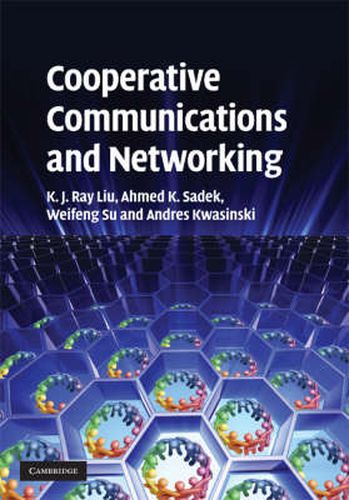Readings Newsletter
Become a Readings Member to make your shopping experience even easier.
Sign in or sign up for free!
You’re not far away from qualifying for FREE standard shipping within Australia
You’ve qualified for FREE standard shipping within Australia
The cart is loading…






Presenting the fundamentals of cooperative communications and networking, this book treats the concepts of space, time, frequency diversity and MIMO, with a holistic approach to principal topics where significant improvements can be obtained. Beginning with background and MIMO systems, Part I includes a review of basic principles of wireless communications and space-time diversity and coding. Part II then presents topics on physical layer cooperative communications such as relay channels and protocols, performance bounds, multi-node cooperation, and energy efficiency. Finally, Part III focuses on cooperative networking including cooperative and content-aware multiple access, distributed routing, source-channel coding, and cooperative OFDM. Including end-of-chapter review questions, this text will appeal to graduate students of electrical engineering and is an ideal textbook for advanced courses on wireless communications. It will also be of great interest to practitioners in the wireless communications industry. Presentation slides for each chapter and instructor-only solutions are available at www.cambridge.org/9780521895132.
$9.00 standard shipping within Australia
FREE standard shipping within Australia for orders over $100.00
Express & International shipping calculated at checkout
Presenting the fundamentals of cooperative communications and networking, this book treats the concepts of space, time, frequency diversity and MIMO, with a holistic approach to principal topics where significant improvements can be obtained. Beginning with background and MIMO systems, Part I includes a review of basic principles of wireless communications and space-time diversity and coding. Part II then presents topics on physical layer cooperative communications such as relay channels and protocols, performance bounds, multi-node cooperation, and energy efficiency. Finally, Part III focuses on cooperative networking including cooperative and content-aware multiple access, distributed routing, source-channel coding, and cooperative OFDM. Including end-of-chapter review questions, this text will appeal to graduate students of electrical engineering and is an ideal textbook for advanced courses on wireless communications. It will also be of great interest to practitioners in the wireless communications industry. Presentation slides for each chapter and instructor-only solutions are available at www.cambridge.org/9780521895132.